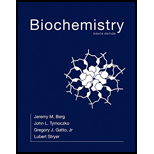
Concept explainers
a)
Interpretation: The effect on lac operon on deleting the gene encoding the lac repressor is to be determined.
Concept Introduction: E. Coli contains of lac operon, which is involved in lactose
a)
Answer to Problem 1P
In the absence of lac repressor gene, beta-galactosidase, lac permease, and thiogalactosidase transacetylase will be expressed by the cell.
Explanation of Solution
The function of lac repressor is to sense the lactose. It blocks the operon transcription in the absence of lactose. Lac operon consists of a promoter, lac repressor, terminator, lac promoter, lac operator, lac Z, lac Y, and lac A. The function of lac Z is to express beta-galactosidase, lac Y is to express beta-galactosidase permease, and lac A is to express galactosidase acetyltransferase. So, when lac repressor in gene is absent, then even in the absence of lactose, all the above proteins are expressed.
b)
Interpretation: The effect on lac operon on deleting the gene encoding the lac operator.
Concept Introduction: E. Coli contains lac operon, which is involved in lactose metabolism. It can be expressed in the presence of lactose and absence of glucose. The two regulators of lac operons are the lac repressor and the CAP. The function of these two regulators is to turn ‘on’ and ‘off’ the operon in response to glucose and lactose.
b)
Answer to Problem 1P
In the absence of lac operator gene, beta-galactosidase, beta-galactosidasepermease, and thiogalactosidase transacetylase will be expressed by the cell.
Explanation of Solution
The function of the lac operator is to express lac operon in the presence of lactose. Lac operon consists of a promoter, lac repressor, terminator, lac promoter, lac operator, lac Z, lac Y, and lac A. The function of lac Z is to express beta-galactosidase, lac Y is to express beta-galactosidase permease, and lac A is to express galactosidase acetyltransferase. So, when the lac operator gene is absent, then even in the absence of lactose, all the above proteins are expressed.
c)
Interpretation: The effect on lac operon on deleting the gene encoding the CAP.
Concept Introduction:E. Coli contains lac operon, which is involved in lactose metabolism. It can be expressed in the presence of lactose and absence of glucose. The two regulators of lac operons are the lac repressor and the CAP. The function of these two regulators is to turn ‘on’ and ‘off’ the operon in response to glucose and lactose.
c)
Answer to Problem 1P
If gene encoding CAP is absent, then even in the low glucose levels, the levels of beta-galactosidase and arabinose isomerase will remain low.
Explanation of Solution
Catabolite activator protein (CAP) senses the presence or absence of glucose. When glucose levels are low, then the operon transcription gets activated. At low glucose concentrations, cAMP is produced, which gets bind to CAP. After this, CAP binds to DNA and helps RNA pol bin to the lac operator, leading to the transcription process.
So, when the CAP gene is absent, then it cannot bind to RNA pol, and transcription of lac operator will not occur.
Want to see more full solutions like this?
- Which type of enzyme catalyses the following reaction? oxidoreductase, transferase, hydrolase, lyase, isomerase, or ligase.arrow_forward+NH+ CO₂ +P H₂N + ATP H₂N NH₂ +ADParrow_forwardWhich type of enzyme catalyses the following reaction? oxidoreductase, transferase, hydrolase, lyase, isomerase, or ligase.arrow_forward
- Which features of the curves in Figure 30-2 indicates that the enzyme is not consumed in the overall reaction? ES is lower in energy that E + S and EP is lower in energy than E + P. What does this tell you about the stability of ES versus E + S and EP versus E + P.arrow_forwardLooking at the figure 30-5 what intermolecular forces are present between the substrate and the enzyme and the substrate and cofactors.arrow_forwardprovide short answers to the followings Urgent!arrow_forward
- Pyruvate is accepted into the TCA cycle by a “feeder” reaction using the pyruvatedehydrogenase complex, resulting in acetyl-CoA and CO2. Provide a full mechanismfor this reaction utilizing the TPP cofactor. Include the roles of all cofactors.arrow_forwardB- Vitamins are converted readily into important metabolic cofactors. Deficiency inany one of them has serious side effects. a. The disease beriberi results from a vitamin B 1 (Thiamine) deficiency and ischaracterized by cardiac and neurological symptoms. One key diagnostic forthis disease is an increased level of pyruvate and α-ketoglutarate in thebloodstream. How does this vitamin deficiency lead to increased serumlevels of these factors? b. What would you expect the effect on the TCA intermediates for a patientsuffering from vitamin B 5 deficiency? c. What would you expect the effect on the TCA intermediates for a patientsuffering from vitamin B 2 /B 3 deficiency?arrow_forwardDraw the Krebs Cycle and show the entry points for the amino acids Alanine,Glutamic Acid, Asparagine, and Valine into the Krebs Cycle - (Draw the Mechanism). How many rounds of Krebs will be required to waste all Carbons of Glutamic Acidas CO2?arrow_forward
 Biology (MindTap Course List)BiologyISBN:9781337392938Author:Eldra Solomon, Charles Martin, Diana W. Martin, Linda R. BergPublisher:Cengage Learning
Biology (MindTap Course List)BiologyISBN:9781337392938Author:Eldra Solomon, Charles Martin, Diana W. Martin, Linda R. BergPublisher:Cengage Learning BiochemistryBiochemistryISBN:9781305577206Author:Reginald H. Garrett, Charles M. GrishamPublisher:Cengage Learning
BiochemistryBiochemistryISBN:9781305577206Author:Reginald H. Garrett, Charles M. GrishamPublisher:Cengage Learning Human Heredity: Principles and Issues (MindTap Co...BiologyISBN:9781305251052Author:Michael CummingsPublisher:Cengage Learning
Human Heredity: Principles and Issues (MindTap Co...BiologyISBN:9781305251052Author:Michael CummingsPublisher:Cengage Learning Biology Today and Tomorrow without Physiology (Mi...BiologyISBN:9781305117396Author:Cecie Starr, Christine Evers, Lisa StarrPublisher:Cengage Learning
Biology Today and Tomorrow without Physiology (Mi...BiologyISBN:9781305117396Author:Cecie Starr, Christine Evers, Lisa StarrPublisher:Cengage Learning Biology: The Dynamic Science (MindTap Course List)BiologyISBN:9781305389892Author:Peter J. Russell, Paul E. Hertz, Beverly McMillanPublisher:Cengage Learning
Biology: The Dynamic Science (MindTap Course List)BiologyISBN:9781305389892Author:Peter J. Russell, Paul E. Hertz, Beverly McMillanPublisher:Cengage Learning





